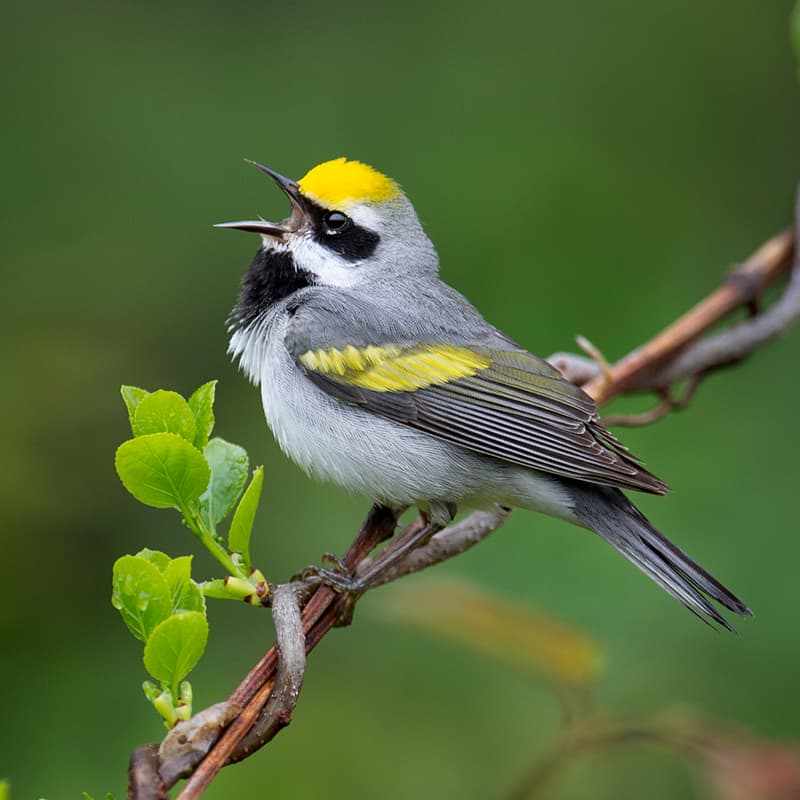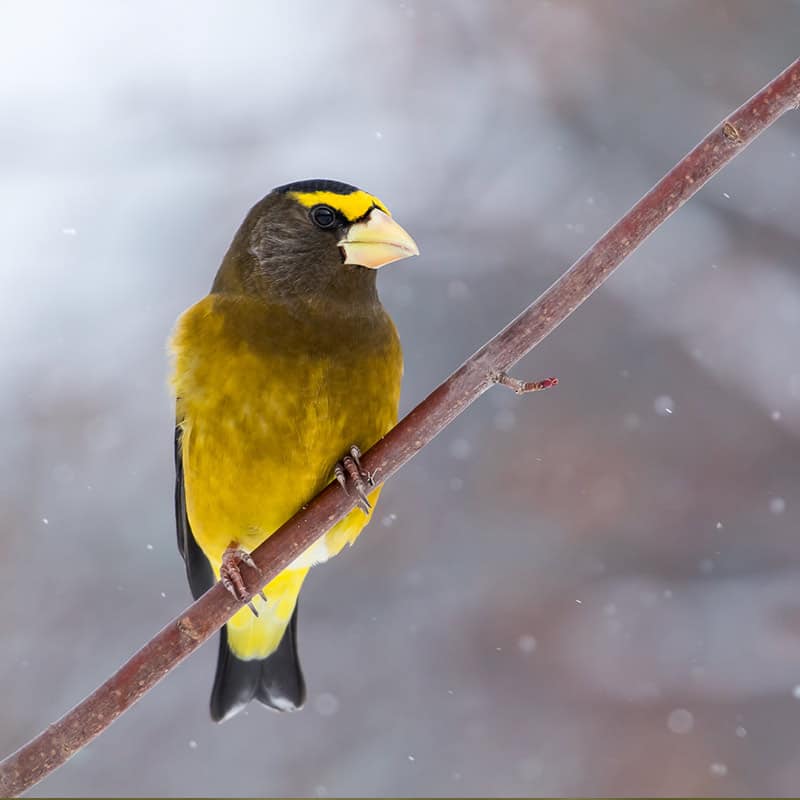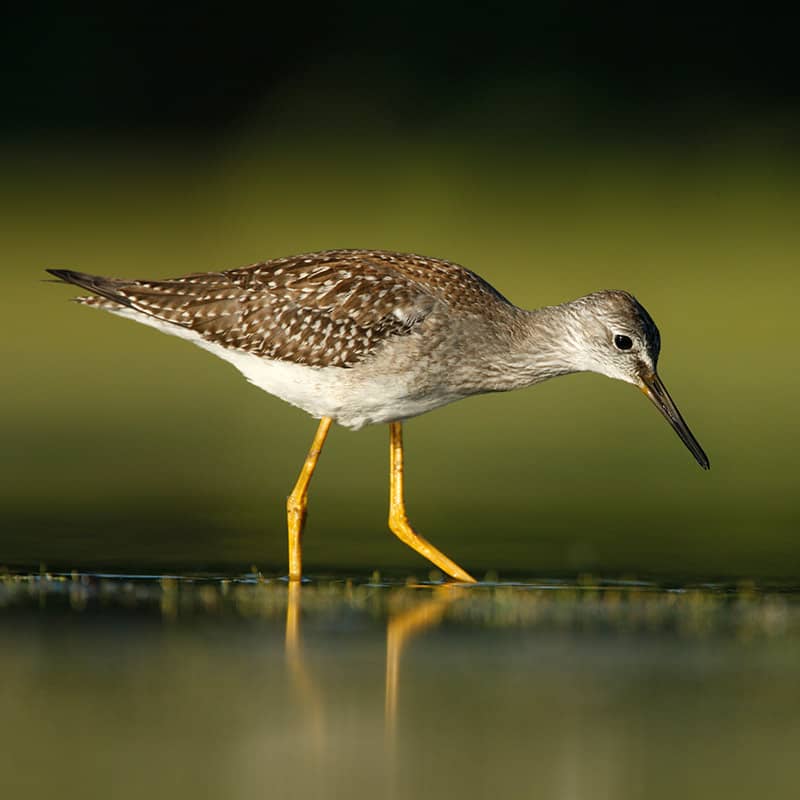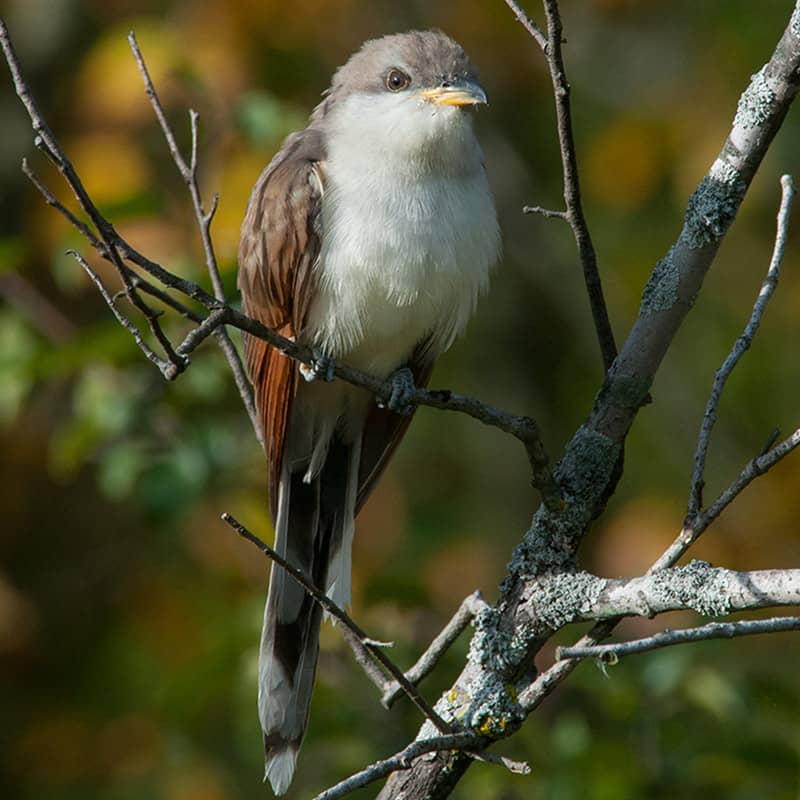Golden-winged Warbler
Vermivora chrysoptera
Understanding Adult Annual Survival of Golden-winged Warblers: A Road to Recovery Pilot Species Project
The Golden-winged Warbler is a species familiar to diverse cultures and communities across its full-annual range. Golden-winged Warbler is a Nearctic-Neotropical long-distance migratory songbird that breeds from Manitoba to Vermont in the Great Lakes region, and from New York to Tennessee in the Appalachian Mountains. During the non-breeding season, Golden-winged Warblers migrate to the highlands of Central America and the northern Andes in Venezuela and Colombia where they reside for the majority of the year. On the breeding grounds, Golden-winged Warblers utilize forest landscapes, dominated by broad-leaf, deciduous trees, where natural and anthropogenic disturbances create patches of regenerating early successional forest characterized by interspersed patches of herbaceous vegetation, shrubs and small trees, and scattered canopy trees. Golden-winged Warblers defend territories from conspecifics on both the breeding and wintering grounds and utilize a specialized foraging technique of probing live and dead leaves to extract insects.

Golden-winged Warbler has experienced one of the most significant declines of any North American songbird. Since the 1960s, the global population of Golden-winged Warbler has declined by approximately 60% and recent models suggest these declines will persist under forecasted climatic scenarios. Golden-winged Warbler is currently under review for Endangered Species Act protection in the United States and is federally threatened under Canada’s Species At Risk Act. It is thought that the decline of Golden-winged Warbler is driven by maturation of suitable early successional breeding habitat, the loss and degradation of tropical forests on the wintering grounds, and hybridization with the closely-related Blue-winged Warbler. The Golden-winged Warbler Working Group was formed in 2003 to promote collaboration among researchers to better understand the species’ decline and among forest management practitioners to improve habitat to reverse the decline.
Conservation Projects
With support from the Knobloch Foundation to supplement funding from the U.S Fish and Wildlife Service and resources from many partners, the Golden-winged Warbler Working Group aims to identify the demographic driver(s) of the species’ decline and differences between the Great Lakes and Appalachian regional populations, which will help accomplish Goal 1 in the Golden-winged Warbler Status Review and Conservation Plan. We can then relate the driver(s) to stages of the full-annual cycle in order to identify the likely threats leading to the imperilment of this specialized and charismatic songbird. In order to move the species along the Road to Recovery process for recovery, this project will collect vital rates that are crucial to the full annual cycle modeling through an integrated population model (IPM). An important gap in the IPM is an understanding of adult annual survival, especially for females. We will use two types of mark-recapture datasets – one using Lotek NanoTags and the other using color-band return rates – with the contribution of data from collaborators throughout the range. We will compare apparent survival estimates for these two datasets to determine the level of agreement and for inclusion in the IPM. This project is possible only through the dedication of many collaborators conducting fieldwork in nine states.
Golden-winged Warbler Lightning Talk
Lightning talk by Emily Filiberti for the Golden-winged Warbler Working Group
Improving estimation of Golden-winged Warbler adult apparent survival to paramaterize an integrated population model.
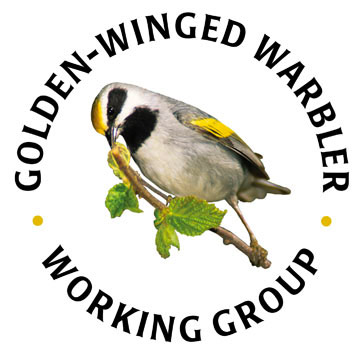
Golden-winged Warbler Working Group
Pilot Species Working Groups
With generous support from the Knobloch Family Foundation, Road to Recovery is able to begin supporting the pilot projects focused on the recovery of four species, three of which are Tipping Point Species. The purpose of these projects is to provide a proof of concept for advancing both biological and social science targeted at identifying and addressing causes of species declines.

